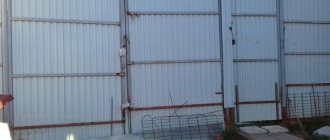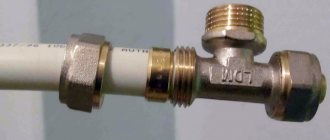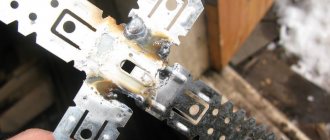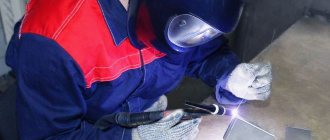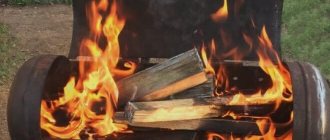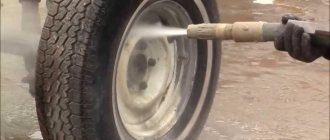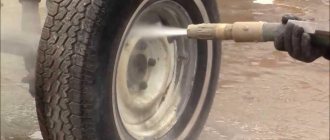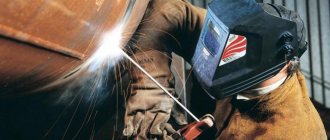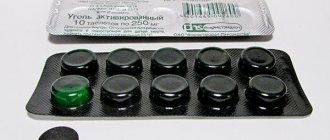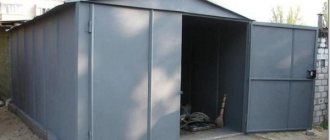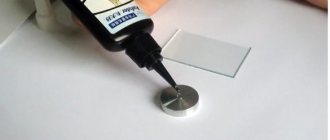Metal is used to make a variety of parts. This is a reliable material, but it is not resistant to a number of environmental factors. Therefore, in order to create a decorative coating, as well as obtain additional protective functions, they often resort to painting the metal. The final result will depend on the choice of product and the correct execution of the dyeing technique. Next we will talk in detail about how to paint metal so that the coating does not peel off.
We treat the metal with primer-enamel. Nuances of preparation and painting
A metal fence, a grate and a garage - what do they all have in common? That's right, instability to the vagaries of the weather, a tendency to corrosion and, as a result, a rapid loss of aesthetic and performance qualities. Primer-enamel allows you to reduce risks. But how to use this composition and what nuances are important to remember? Valles found the answers.
Surface preparation
Despite the fact that 3 in 1 enamel primer does not require additional primer, the surface must be pre-prepared. And the first step on this path is to clean the product from the old paint so that the fresh layer fits perfectly. This can be done in two ways - mechanical and chemical.
- The mechanical
method involves using a brush attachment for a drill or grinder. In this case, it is not recommended to work at high speeds, especially when cleaning soft metals - there is a high risk of damaging the product; - The chemical
method is carried out using special washing compounds. They must be used carefully, carefully following the instructions on the packaging and using personal protective equipment (gloves, respirator). Immediately after completion of work, the room is thoroughly ventilated.
Note
:
applying primer-enamel to a layer of old paint is possible, but first you need to check the materials for compatibility. To do this, a small part of the surface (clean and grease-free) is covered with a primer composition: if the paint begins to swell or peel off in layers, the old coating must be completely removed.
The next step is to remove the rust.
If the product is old and covered with layers of flaking rust, the latter must be removed. Otherwise, the paint coating simply will not adhere to the surface and aesthetic perfection will not be achieved. A loose layer of rust can also become an obstacle, so that too is cleaned off. This may seem like an excessive action when choosing a 3-in-1 primer-enamel. However, the better the rust is removed, the more reliable the contact of the anti-corrosion coating with the metal will be. In addition, this way the work will be more economical: when applying transformative primer-enamel to an uncleaned surface, you will have to use more layers of material. Rust is removed using a special brush attachment or sandpaper.
The third stage is cleaning the surface from dust and degreasing
In order for the material to adhere well to the surface and the anti-corrosion component to function fully, the metal surface is degreased. This is best done using a special composition (degreaser), gasoline, alcohol or white spirit.
Painting
When tinting enamel with your own hands
it is necessary to tint the entire batch at once, and not each jar separately.
Primer enamel is painted using a brush, roller or spray
. When processing products with complex geometries, such as radiators, you will need a second brush with a curved handle for hard-to-reach places.
Primer-enamel 3 in 1 is applied in several thin layers
- as a rule, from 2 to 4. An attempt to paint the material in one thick layer can lead to the formation of drips: the coating will look unsightly and take a long time to dry.
Second layer
can be applied in one of two ways: no later than 30 minutes after the first one or after waiting for it to dry completely. This time is different for each specific enamel, so you should carefully read the corresponding paragraph in the instructions.
When working with primer-enamel
It is recommended to use personal protective equipment -
thick rubber gloves and a respirator
. If the product does get on the skin, it must be washed off immediately with running water.
Source
How to calculate paint consumption
Before painting a metal product, you need to calculate the amount required for the job. The manufacturer always writes the average product consumption on the packaging of the product. The indicator may vary somewhat; it is influenced by the application tool, surface structure, coloring agent, and the presence of complex elements on the object.
The manufacturer always writes the average product consumption on the packaging of the product.
Is it correct to prime? Yes, easily!
During the times of gloomy totalitarianism, when censorship was rampant in literature, and in the construction of SNiP, even the primer was clamped down. Except for processing wood or metal, they were practically not used.
Now the matter is different and the phrases “you bought the wrong primer” or “you primed incorrectly” are heard in every second justification for the reason for defective finishing.
But this is a joke, but how important is primer really and when is it needed? And how to apply it correctly, if required?
Features of metal painting
The best painting result will be obtained if you select the paint in accordance with the type of metal.
The most common material in the manufacture of metal structures is black iron; it becomes covered with rust very quickly, and painting is required. Both alkyd and oil paints are used to paint it. It is better to choose an alkyd primer containing chromate or phosphate (zinc compounds), then the surface of the black iron will be more reliably protected.
The galvanized surface is much more resistant to corrosion; it is widely used to cover roofs to this day, although now a wide variety of types of roofing material have appeared. A roof made of galvanized material will last up to 15 years, but if you paint it, you will increase the service life even more. In addition, the roof will look much more aesthetically pleasing.
The paint will last several seasons if you use alkyd enamel rather than oil or alkyd paint.
The need for painting non-ferrous metals arises extremely rarely. As a rule, they are varnished rather than painted. Polyurethane and epoxy varnishes can be used.
In the instructions for use supplied with the paint, manufacturers always indicate the most appropriate ways to use it. Don't forget to check it out.
The meaning of the sacrament
Primer, primer is a material that is applied to the surface to be treated. The process itself is called differently. Priming, coating with primer, coating with primer and, again, primer.
In this case, it is expected to solve the following tasks (both all at once and separately):
- surface strengthening;
- increasing the “adhesion” (adhesion) of the base material and the subsequent layer;
- imparting uniform properties (absorption, surface density, etc.) over the entire area of the structure being treated;
- anti-corrosion protection.
Hence the scope of application: preparation for plastering leveling, applying putty, painting, cladding with adhesive materials.
There are two main types of primer:
- Penetrating. Due to surfactants, it is able to penetrate deep into the thickness of the base, increasing its strength.
- Covering soils that form a durable layer of varying thickness on the surface of the base. Putty comes close to such a primer.
How to choose paint for metal
When choosing paint for metal, many people think only about its color, unaware of the existence of important characteristics that affect the application process and subsequent operation. Here are the main parameters that you should pay attention to when choosing enamel for metal structures:
- Application temperature
. In order for the paint to adhere easily to the metal and spread evenly, a suitable ambient temperature is required. For some compounds it is +10 degrees, and for others from +1, which expands the possibilities for use for street work in the cool season. - Operating temperature
. After hardening, the paint layer retains its color without yellowing up to a certain temperature. For alkyd paints the indicator is 80 degrees, for acrylic paints 120 degrees, and for polyurethane paints up to 150 degrees. - Dilution
. Water-soluble paints require water to prepare for use and do not emit an unpleasant odor. Diluting with a solvent slightly increases the cost of painting per square meter and is more toxic at the time of application. - Surface requirement
. Some types of enamel need to be applied only to a cleaned and degreased surface, others are allowed to be painted even over rust. This is achieved through special substances in the composition that transform existing corrosion and stop it. - Drying time
. The indicator varies from 5 to 12 hours and affects the duration of the work and the commissioning of the structure. - Method of application
. Some products are suitable for brushes, which is practical in the case of a small area to be painted and a complex contour of the product. Other enamels can be applied by roller or spray, and this speeds up the process and is optimal for large and even structures. - Covering power
. Costs depend on the consumption of coloring material. Covering capacity can range from 7 to 13 m² per liter. - Gloss level
. In addition to paint color, there is a degree of gloss, where there are matte, semi-matte, glossy, semi-gloss options. All this in its own way affects the appearance of the parts being painted.
Is it always necessary and if so, how?
In online opuses about home renovations and new construction, phrases like “pre-primer” appear at least twice as often as is actually necessary.
In fact, soil is not often needed even for repairs. And even more so, you can do without it in new construction
Let's look at cases where a primer is really needed or at least desirable. And where “YouTube specialists” recommend its application.
· Installation of leveling plaster or cement screed.
Depending on the quality of the leveled surface.
For bricks or blocks, it is enough to clean the seams and remove dust (that is, walk with a damp brush). The same for concrete, cement screeds and old, uneven plaster (without painting!).
Painted walls should ideally be cleaned of paint and dusted. But if you don’t want to waste time, contact primer is a possible option.
If the base is loose and crumbles even under your finger, remove the unstable layer to a solid base. If this is not possible, a compromise solution would be strengthening with a deep penetration primer.
To use this option, you must first make sure that the base does not peel off in entire layers and has sufficient strength to hold the subsequent coating and possible mechanical impacts.
In such cases, it makes sense to first apply primer to a small area and see what happens.
Deep impregnation soil will not interfere if the plaster is carried out on masonry made of weak sandstone, shell rock, marls, gas concrete, foam concrete.
· Putty
The recommendation to prime before puttingty is quite common. In fact, even if the plastering was done a long time ago, dust removal is enough. However, if when removing dust instead of water you use a deep penetration primer, or add a glass of PVA to the bucket, it will not be worse. But it’s more expensive - yes.
· Coloring
For the most part, a primer is necessary. A layer of the same paint, but diluted, or special compositions can be used as a primer.
The exception is low quality painting for the purpose of anti-corrosion protection. For example, painting of pipelines and coatings with red lead, nitro-based paints, bitumen varnishes, alkyd dyes.
· Wallpapering
Priming is mandatory to prevent water from being “sucked” out of the glue. A special primer is not required; pre-treatment with slightly more diluted wallpaper glue is sufficient. It is not necessary to wait for the primer to dry.
· “Liquid wallpaper”, decorative plaster, decorative putty.
One of the few cases when priming with contact primer is necessary if you want to work efficiently and quickly. In this case, it is better to use a primer-paint that matches the tone of the finish coat. This is especially important when working with “liquid wallpaper”
· Tiling (stone)
If pre-leveling with plaster is used before facing, no primer is needed. Tile adhesive reliably adheres to all types of plaster compositions.
If the leveling is done simultaneously with laying the tiles, i.e. whether or not to prime with a layer of adhesive (which, to be fair, is a sign of lack of professionalism) depends on the quality of the base. The requirements here are the same as for installing plaster (screed)
When cladding on gypsum plasterboard, OSB, and other unstable bases, contact primer is required.
Let's summarize the above. So, in all cases we reason as follows:
1.
Is the base suitable for further work without primer?
If yes, then whether to do it or not is at your discretion. As a last resort, you can toss a coin.
If it doesn't fit, the best way is to redo the base. A primer will be a forced and often worse alternative.
2.
The technology for installing the subsequent layer requires a preliminary primer. Moreover, not from YouTube or the site “Advice from a Stupid Specialist,” but from SNiP. At worst - recommendations from the manufacturer of the finishing material.
Overview of the base
Before looking for a decorative composition, you need to find out whether galvanized iron can be painted and with what. Rolled metal is in demand in the construction market due to its versatility in use. It is durable, resistant to a wide range of temperatures and mechanical stress, and retains its shape under constant and uniform load. An undoubted advantage is also the ease of cutting.
The only drawback of the metal is its instability to moisture. Upon contact with water, rolled metal begins to corrode. To eliminate the destructive process, the workpieces are coated with a special protective alloy that is rust-resistant. The main component in the composition is zinc. This metal and alloy in general has adhesive properties to a number of substances, which, among other things, are added to the composition of many paints and varnishes. That is, additional coating with decorative materials is acceptable. It remains to decide what type of zinc paint is needed: for exterior or interior use.
Painted galvanized steel fence Source orgpage.ru
What to do. A little about the process
The modern construction market is replete with names of primers.
The leaders are compositions based on acrylic resins. Those who have dealt with repairs have heard: “concrete contact”, “betocontact”, “deep impregnation primer”, “contact primer”, etc. For the most part, these are acrylic-based compositions.
In addition to them, there are primers based on polyvinia acetate (PVA glue, known to everyone, is what it is). There are primers based on nitro compounds (for metal), on various alcohols and drying oils (for wooden products), on epoxy resins, etc.
Types of coloring compositions
Varieties:
- Oily. Suitable for decorative finishing of surfaces indoors and outdoors. Made from organic substances. Before applying oil paint, you need to cover the working surface with primer. The main disadvantage is the persistent pungent odor. Such enamels can only be used in ventilated areas.
- Epoxy. Manufactured on the basis of silicone resin. In order for the composition to set, different hardeners are used. Can only be used for exterior painting as they are highly toxic. It is difficult to work with epoxy paints, but the finished coating reliably protects surfaces from rust.
- Acrylic. The basis of such paints are polymers. Suitable for painting metal parts indoors.
- Alkyd. Used for external and internal work. Easy to apply, no primer required.
- Rubber. Special dyes used to coat the external sides of building walls and roofs. Withstands prolonged exposure to moisture and ultraviolet radiation.
For metal, you need to choose paints that protect against rust. Before painting, the surfaces must be coated with a primer containing a high zinc content.
Alkyd enamel for car painting (Photo: Instagram / avtoemali_vika_kz)
What to do if not
As you may have noticed, in some cases the primer can be replaced with plain water.
And then, somehow in the USSR they managed without superprimers, and nothing, 80% of the existing residential and industrial stock was built today?
But what if your intuition still whispers: “Gruntani! It won’t be superfluous!”?
If the volume of work is not large, a fairly decent contact primer can be made from PVA, cement and a small amount of fine sand. For a liter of water, you need half a glass of emulsion and a quarter glass of cement and sand. Stir well and apply immediately.
If the main task is to remove dust from the surface, penetrating soil will successfully replace the same PVA mixed with water in a ratio of 1:10
In conclusion, a few words about the requirements to use a primer from the same company that produces other materials involved in finishing.
In 99% of cases this is a banal marketing ploy. However, professionals - single craftsmen and construction companies prefer this, and to do so, although it is often more expensive. The reasons are different, but there are two main ones:
- Using materials from different manufacturers, it is difficult to make claims to quality if a defect is revealed during the work. An argument that can’t be killed right away: “You didn’t use soil from our company, hence all the troubles.”
- By purchasing material from one dealer, you are almost 100% insured against counterfeits.
When you are your own foreman and carpenter, using materials from different companies allows you to achieve some savings. True, this should still be approached with caution.
See you again! I will be glad to make new friends. New articles are published regularly. Subscribe and stay updated!
Source
Why is wall priming necessary?
Before painting, the surface is leveled using various materials. Drywall, plaster and others are often used, then putty is applied. If you do this correctly before painting, you can prevent changes, cracking and other defects. Then primer is applied to the walls. It is necessary to carry out preparatory work for the following reasons:
- To improve adhesive properties, due to which the finishing material adheres to the base coat. The primer allows the paint to better adhere to the surface, preventing it from peeling and cracking. Subsequently, it is not difficult to prepare for repainting;
- Helps reduce the degree of moisture absorption by the surface. This is especially important for walls after applying plaster, putty and other special materials;
- To strengthen the foundation. Weakened, porous and loose wall structures become strong and solid due to the penetration of a special substance inside. This is especially typical for compositions that penetrate 8-10 cm into the material;
- After applying the plaster, the development of fungus and mold is prevented. A wall primer containing fungicidal substances, used for painting, allows you to cope with existing problems on wall structures;
- The substance prevents the appearance of red spots on wallpaper and other finishing materials during use;
- Reduces paint consumption. Primed walls do not absorb large amounts of substance. During the work, a uniform decorative layer is created.
In the process, it becomes possible to get by with one coat of paint where you have to paint 2-3 times without a primer. This contributes to significant savings in money and consumables.
Why paint metal?
In everyday life, the most pressing issue is the protection of outdoor iron structures: metal does not like high humidity, under its influence it oxidizes and begins to deteriorate. If the iron is not protected, the structure will quickly lose its original strength.
The process of processing iron surfaces is not as simple as it might seem at first glance:
- the metal has a smooth surface, which means it has very low adhesion to any paintwork materials;
- Not all paints can protect against water.
In order not to waste money and buy a material that is guaranteed to protect your gate or canopy base from the effects of precipitation, let’s look at the proposed compositions.
The result of poor-quality metal painting will be a damaged structure after a short time.
Pre-treatment before painting
Before starting the main work, it is recommended to plaster the walls, having previously cleaned them of dirt and dust. To prepare the surface after traces of previous repairs, remove paint and tear off wallpaper. After this, the cracks, cracks, and irregularities are sealed using various soils.
There are special universal compositions that not only improve the properties of the material indoors, but also contribute to better adhesion of substances outside the building. After preparing the surfaces, paint is used.
Other options
It is not always possible to understand acrylic or epoxy by name. For example, friends advised using hammer paint or rust enamel for painting. Let us describe the most popular compositions, their constituent substances, and, as a consequence, the properties of paints and varnishes.
Hammer paint
Another name for paint is blacksmith paint. The composition can have a different base, such as alkyd, acrylic or epoxy. Sold most often in cans, after application it forms a very characteristic coating, visually reminiscent of a surface beaten with a hammer, hence the name.
Recognizable effect: hammer paint on metal gates
The effect itself is achieved by adding low-grease aluminum powder to the base paint. In fact, all the properties of the paint depend on what composition was taken as a basis. And the hammer effect has its advantages:
- perfectly hides small surface defects;
- improves thermal characteristics;
- increases resistance to water and temperature changes.
On a note! Aluminum powder only enhances and improves the properties; the main level is set by the forming substance of the paintwork material.
Anti-corrosion compounds
Another common name is rust paint. Epoxy one-component compositions that significantly reduce the cost of metal stripping work. These paints contain anti-corrosion additives that provide durable protection against rust and at the same time create a decorative coating. Paints can be glossy or matte, but this does not change their performance properties.
Advantages:
- Such compositions can be used in a wide temperature range from -20 to + 80°C, which makes it possible to paint communication systems associated with water supply.
- Before application, the metal does not require special cleaning or priming, and the result is a durable coating that is resistant to moisture and dirt.
- Manufacturers claim a service life of about 8 years. In fact, the paint lasts longer, only slightly reducing its protective qualities.
The compositions have disadvantages, and the main one is the price. In addition, this type of paintwork material cannot be used to process surfaces that are in direct contact with drinking water.
Anti-corrosion compounds form a dense film on the metal surface
Rubber paint
Acrylic composition option. In appearance it resembles liquid rubber or mastic, but the technical characteristics of the finishing layer differ from rubber. Working with this composition is quite simple; it is non-toxic, because it is water-dispersed. At the same time, the paint contains certain additives that give the paint layer the following properties:
- elasticity,
- high strength,
- resistance to low and high temperatures (range -60/ +50°C),
- not susceptible to high humidity.
The paint does not require special surface preparation before application. It is an excellent waterproofing agent. Due to this property, it is very often used for painting metal roofing materials.
Rubber paint is an excellent material for treating metal roofs.
In a special article, we will consider all the characteristics and features of the use of rubber paint, which has recently appeared and has already won the trust of both professional builders and ordinary people.
Tools you will need for the job
If you are going to apply primer to the walls before painting, you need to acquire the following tools:
- Apply the substance with a roller;
- To apply in difficult places you need to use a brush;
- Spray bottle;
- Container for primer.
The tool is selected based on the situation. If you need to paint drywall, use a roller. The brick is processed with a brush.
How to apply paint primer
When asked whether or not materials need to be primed before painting, many craftsmen answer positively. As a result of the treatment, the coating is strengthened and protected from the negative effects of the environment. Apply the solution as follows:
- Cover the entire surface evenly;
- Putty is applied on top;
- The wall structure is primed again.
In order for the substance to lie flat, you need to roll the roller over the material, and then carefully move it along the wall.
What colors are there and how are they different?
Oil paint
Thanks to the drying oil in the composition, a water-repellent film is formed on the surface of the parts. Drying oil is an oily liquid obtained from vegetable oils.
After application, it thickens and dries very quickly. Drying oil can be linseed, hemp, sunflower (hardens the longest).
It is not recommended to use oil paint on zinc or aluminum; it simply won’t stick. Drying oil-based paint is good for pre-priming.
The advantages are a beautiful coating, no pungent odor, and low cost.
Minuses:
- After only 3 years, the surface needs to be repainted.
- Fades quickly when exposed to the sun.
- Low corrosion protection, metal surface may rust under a layer of paint.
- Suitable for temporary use only.
Nitro paint (nitra)
Nitrocellulose enamel for metal is characterized by fast drying, but a very pungent odor. After just half an hour, the painted parts are ready for use. Quick drying largely depends on the application method. Most often, a spray gun is used for painting.
The smell of enamel is so strong that hospitals, sanatoriums, schools and kindergartens do not buy paint. Due to toxicity and increased flammability, restrictions on painting are noted in Russian laws.
You can work with enamel indoors only with good ventilation.
Pros:
- Quick-drying paint for metal.
- Does not require dilution with solvents.
- Economical consumption (1 m 2 up to 120 g, if several layers are applied, and about 30 g if one layer is applied).
- Affordable price.
It is better to buy enamel in special cylinders. Nitroenamel can be used to paint not only metal, but also wood and concrete. Sometimes the paint is diluted with acetone.
Alkyd enamel
Universal, environmentally friendly, durable (the metal retains its original appearance for at least 10-20 years), comes in different colors, as well as glossy and matte.
The main component of the paint is alkyd pentaphthalic and glypthal varnish, which enhances gloss.
The enamel base is pentaphthalic resin, vegetable or tall oil. It is recommended to paint in several layers using a spray gun or brush.
Alkyd paint for metal repels water and protects metal from rust, but you need to look at the markings: digital indicators indicate which surfaces can be painted (PF-133 is suitable specifically for metal). PF is short for pentaphthal.
Pros:
- Resistance to ultraviolet radiation and temperature changes.
- High-quality protection against corrosion (a layer is formed).
- Good price.
- Protection against fungus and mold.
- Preservation of rich color for a long period.
- Durability.
The protective film can withstand cleaning with bleach or bleach.
Buy paint for metal surfaces in accordance with GOST; the mark “TU” means that the manufacturer has diluted the paint with additional solutions, which may have a negative effect on the quality.
The disadvantages include a strong odor (the first sign of toxicity and flammability), drying time, cost and difficulty in selecting the right composition.
Previously, only iron structures were painted with alkyd paint; now enamel is widely used in painting concrete walls.
Before application, you must first clean and degrease the surfaces. If stored for a long time, it becomes thick (then the paint is diluted with white spirit).
Acrylic paint
Water-based compositions are considered the best material for painting metal.
Acrylic paint for metal has good adhesive ability (high level of adhesion to the surface) and a long service life.
After drying, an elastic protective film is formed on the metal surface, which prevents the paint from cracking under the influence of the environment. The substances in the composition prevent the decorative layer from peeling off and neutralize the effect of oxidative processes.
The paint is easily washed off from tools (which means you can use a spray gun without fear), does not fade under the influence of ultraviolet radiation, is not fire hazardous and non-toxic. You can dilute it with plain water.
Epoxy paint
The material contains epoxy resin; sometimes a coloring pigment or resin hardener is added. There are several types of paint materials: two-component enamel (used in everyday life) in the form of powder and aerosol.
Most often, paint is used to update decorative metal parts inside the house, rather than outside.
The peculiarity of the composition is to give gloss to the metal.
Pros:
- Water repellent.
- Non-flammable.
- Elastic.
- Has high adhesiveness.
- Can be applied in one layer.
- Large selection of colors.
- Resistance to aggressive environments (alkalies, acids, salts) and damage.
Epoxy paint is used to paint cars, batteries, oil or gasoline barrels, and tanks.
Hammer (forge) paint
It is worth noting that the price of the material is not low, but the quality is also high. After treatment, even the most rusty parts will appear new.
Composition: synthetic resin, aluminum powder, crushed glass, silicone and additives that increase resistance to adverse weather conditions.
Metal and rust paint masks roughness and minor defects on metal parts, silicone and aluminum powder give surfaces a noble appearance.
Paint can be compared to a polymer coating, a more expensive material (many manufacturers pass off hammer paint as polymer).
Beware of fakes in the markets - the lower the price of paint and varnish material, the higher the likelihood of fraud.
Pros of paint:
- It takes no more than 2 hours to dry.
- Non-toxic, no pungent odor.
- Large selection of colors, does not fade, retains its original appearance for a long time.
- Dust does not stick to the structures.
- No pre-cleaning is required before application.
- After treatment, the composition suppresses the formation of corrosion.
- The maximum service life is up to 10 years.
- After severe damage or impact, the part may bend, but the coating will not break off.
- Safes can be painted.
Minuses:
- High price (from 1000 rubles per 1 kg).
- Removing paint is very difficult; not all solvents help.
Anti-corrosion compounds: types
Paint for painting metal surfaces against rust prevents metal structures from deteriorating and increases their service life.
Types of protective solutions:
- Liquid product (enamel, paint) – applied to a previously primed surface, forms a protective film.
- Primer with zinc admixture (serves as the main protective coating).
- Metal galvination - applying a solution with an electrolyte to a part. A substance that conducts electric current penetrates the first layer on the surface, enhances adhesiveness, and prevents rust from forming.
- Ceramic coating requires high heat. There are different application methods: flame, plasma, paraphase and enameling. The most common method is enameling.
Most often, multifunctional enamels are chosen for coating (rust paint 3 in 1). It is enough to remove the first layer of rust and start painting.
As for the primer, there are two types - for parts with good roughness and adhesive ability, and for aluminum, anti-corrosion, copper and duralumin surfaces.
Anti-corrosion compounds are suitable for painting heating systems (at -20°C, +80°C), and can be applied to surfaces without removing rust.
The downside is the high price.
Rubber paint
Unlike other compounds, which after drying cover the surface with a hard film, rubber paint has a slightly soft protective film.
The basis of the material is water-acrylic. When you open the can, it seems like there is liquid rubber inside.
Contains:
- Finnish latex (gives strength).
- Antifreeze (increases resistance to cold temperatures).
- Coalescent (additive that promotes film formation).
- High-quality pigments, fungicides.
The paint for painting metal surfaces is odorless, there is no solvent in it, which means the solution is non-toxic (you don’t have to ventilate the room when applying).
Suitable for rooms with high humidity and for updating metal roofs.
The paint for painting metal surfaces is elastic, has good adhesion to the surface, and is breathable.
Painted structures can be washed with water; the metal can withstand not only sub-zero temperatures (withstands up to -50-60°C), but also positive temperatures.
Consumption is minimal: 1 kg of paint can be painted up to 7 m2. More paint will be needed for a corrugated surface (approximately 200 g per 1 m2). For smooth, about 150 g.
The paint and varnish material is inexpensive; you can paint not only metal structures, but also concrete, natural stone, brickwork, and boards.
The finish is matte and you can apply varnish on top. You need to start work at a temperature of 3-4°C.
Primer of walls for water-based emulsion
Experts definitely recommend priming surfaces before painting them with water-based emulsion. This type of paint is harmless, dries quickly, and is available in a large number of colors. The water-based emulsion is prepared by mixing white paint with coloring pigments.
When planning to apply a water-based material, you need to prime the drywall or plaster, putty it, and level it using an abrasive mesh. After this, the surface should be puttied and also sanded using a fine-grained mesh. After the substance has completely dried, the wall is primed. After the layer has dried, the surface is painted with a suitable water-based emulsion. Experts guarantee a good option, even application, and no cracks when using fiberglass.
How long can it take to paint, drying time
The primer for walls for painting dries completely the next day. There are some options that allow you to start painting after 5-7 hours. Despite this, experts recommend waiting a day, which helps improve adhesive properties and strengthen the surface.
While waiting, remove open containers with water, solution residues and other substances from the room. Their presence helps slow down the drying process.
Recommendations and safety precautions
Safety regulations:
- The room in which the work will take place must be well ventilated.
- If the solvent is spilled, the resulting stain must be covered with sand.
- You should work in a respirator, safety glasses, gloves, and long-sleeved overalls.
- The remaining paint must be poured into a separate container and sealed tightly.
- Used jars should be washed or thrown away.
Do not pour any remaining paint down the drain.
Metal painting is performed to change the shade of the product and protect the material from rust. To obtain the desired result, you need to choose one of the possible methods of applying the coloring composition and select the paint. Attention should also be paid to the preparation of metal surfaces. Without it, the decorative coating will be destroyed in a short period of time.
Is it possible to paint without a primer when it is necessary to apply a primer?
A primer before painting may not be used in cases of gluing wallpaper and then painting it, as well as after finishing with latex putty, which does not crumble during use.
The need for primer is established in cases where it is necessary to paste wallpaper. This allows you to securely adhere them to the walls. Plasterboard sheets must be primed with the substance. Plaster is used if you need to repaint old paint in a new tone, which helps neutralize the show-through of the previous finish.
By priming any surface before painting, you make further finishing work easier. This contributes to better distribution of the paint layer and a reduction in consumables, which can save significant financial resources.
How to paint galvanized steel
Let's look at how to properly paint galvanized steel so that the paint doesn't peel off. There is an important nuance here. After degreasing the surface and drying the product, painting should be done within the next half hour. Then the prepared base will not lose its adhesive properties. If the choice is made in favor of primer-enamel, then it is not necessary to carry out priming separately. To obtain maximum results, regardless of the choice of how to paint a galvanized sheet, apply at least 2 layers of finishing material (preferably 3).
